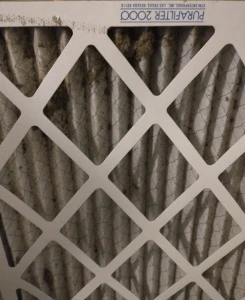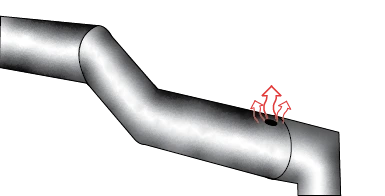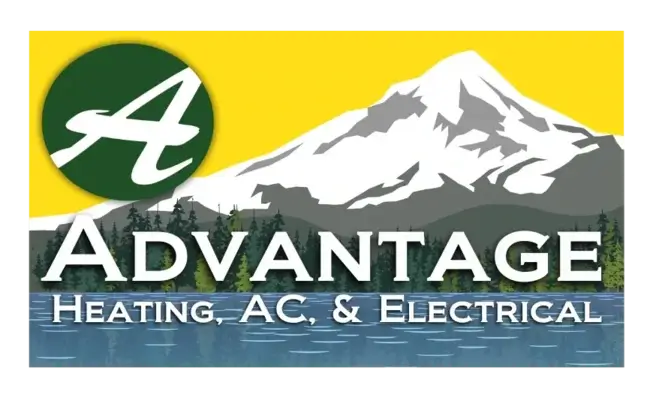Furnace Blowing Cold Air
Our furnaces are supposed to keep us warm during the cool seasons, right? So, what happens when they actually make our homes colder? How do you fix it when your furnace is blowing cold air?
If your furnace is blowing cold air, then it’s probably making your home very uncomfortable. It could also raise your energy bill or be a symptom of a part failing.
Your furnace runs until the temperature in your house matches the temperature you set at the thermostat. If it is actually pushing the temperature in the other direction, then it will keep running for a long time. This means that your furnace will use more energy and wearing itself down just to make your home cold when you want it to be warm.
In this post, we’ll go over the different reasons a furnace will blow cold air. Some of these problems are ones you can fix yourself. There are other causes that a qualified technician should repair.
The goal of this post is to help you diagnose the problem yourself. That way, you can have an educated discussion with your HVAC technician. That means you can get a more accurate quote on time and cost of the repairs.
Don’t Panic

The first thing to remember is to not panic. A furnace blowing cold air does not always mean that something has gone terribly wrong and that you will need a new furnace.
In most cases that we encounter, you can fix this quickly at little to no cost. If it is mechanical failure, then it is usually an easy fix for our technicians. Only in rare cases, the furnace is unrepairable.
Thermostat Settings or Wires
The first thing you should check is your thermostat. It could be one of two things: the settings or the wiring.
Change the Settings
It’s possible that your thermostat has the wrong settings. This happens either just because of oversight, or maybe it’s a new thermostat that you’re not familiar with. We may not like to admit, but this is an incredibly common occurrence. Having the right or wrong thermostat settings can change your annual heating bill by as much as 10%.
There are a few things that you will want to do:
- Make sure the thermostat is set to heat.
- Raise the temperature. 69-73 Fahrenheit is a good range to test your thermostat.
- Make sure the fan is set to auto. Not just on.
- If it’s programmed, make sure the cooling program from late summer did not stay on.
If the fan is set to on, then it will blow as long as it has power. That means the furnace is not generating heat, the blower fan will just be circulating cold air through your ducts. If the fan is set to auto, then it will only blow air while the furnace is creating heat.
Incorrect Installation
Thermostats with incorrect wires are common in DIY installations. Sometimes, we’ve even found furnaces that are connected to incompatible thermostats. If the wiring is incorrect, then your settings on the thermostat may be correct, but it’s not passing that information to the control board of the furnace. A professional technician will need to correct this.
Furnaces Need Time to Warm Up
Your furnace, like an oven, needs time to warm up. This is something that seems obvious but doesn’t occur to us at the moment. Your furnace ignites combustible gas to warm up the air in the heat exchanger and it takes time to warm that air.
Give your furnace 15 to 20 minutes after you hear it kick on. If it is still blowing cold air, then it might be something more serious.
Furnace Overheating
It is possible that your furnace is overheating and turning off. Modern furnaces have an array of safety sensors that stop them from running when they overheat.
Here are some of the most common problems that could cause your furnace to overheat:
- Dirty Air Filter
- Equipment Failure
- Old Age
Dirty Air Filter
This is one of the most common problems we see in furnaces. If your furnace’s filter is dirty, then the furnace won’t be able to blow air through it. This traps the hot air back in the furnace and will cause it to overheat.
To see if your filter is dirty, give it a visual inspection. Any debris or build up visible on the filter is a bad sign. You can avoid this by changing your filter regularly, per the manufacturer’s recommendations.
Equipment Failure

Furnaces are complex machines with lots of moving parts. At some point, a part of the furnace can break. It could be the pilot light, igniter, the heat exchanger, or any other number of different parts. If any of those parts breaks, they could cause your furnace to work hotter and overheat.
While there is no way to have a zero percent chance of equipment failure, regular maintenance can help reduce that risk. Keeping your furnace within warranty can also help to reduce the cost of repair.
Old Age
Most gas furnaces have a lifetime of 20 years. If your furnace is close to or over that age, it may run less efficiently than it did before. As a furnace runs, it will suffer natural wear and tear. This wears down the moving parts of the furnace and makes them less efficient. This can cause your furnace taking longer to produce heat or not producing as much heat as it did when it was new.
If you have had your furnace for around 20 years and have noticed a decrease in performance, then you should contact your local HVAC professionals. They may restore performance with some repairs, or they may recommend that you replace the entire unit.
Air Duct Leaks
Hot air travels from your furnace to your home through your air ducts. If the hot air escapes while it is still traveling through your duct work, then it cannot heat the interior of your home.
There are several reasons your ducts could develop a leak:
- Pinhole Leak
- Ducts Became Unsealed
- Duct Collapsed
- Ducts Aren’t Properly Insulated

If you suspect that any of these problems are the reason you’re not getting hot air, then contact your local HVAC professionals. They will perform a duct inspection to determine where the problem is and might do a quick repair while they are there.
Closed or Weak Gas Supply
If you have a gas furnace, then your furnace needs natural gas to create heat. It pulls this gas from the gas main through the gas valve. If your gas valve is closed or partially closed, then it cannot create heat.
Make sure the gas valve next to your furnace is set to the open position. The disk or lever should be parallel with the pipe it sits on. If it’s open, check the street side valve for the same problem.
If both valves are open but you suspect this is the issue, call your gas supplier. They could be performing maintenance in the area.

Sensor Failure
Another problem could be that your flame sensor is not working. Your furnace has a sensor that detects if there is a flame. If it does not detect a flame, then it turns the furnace off to prevent a gas leak.
As the furnace burns natural gas, it creates carbon residue that builds up on this sensor. This residue can stop the sensor from working. When the flame sensor stops working, it stops the furnace from turning on. So, your blower fan will cycle the cold air in your ducts, but your furnace won’t be creating any heat.
During a regular fall maintenance call, an HVAC technician inspects and cleans this sensor. If you missed your maintenance this year, call your local HVAC professionals. They can clean this sensor and see if any other problems have developed.
No Pilot Light or Ignition
It’s possible that your furnace’s pilot light or ignition has stopped turning on. In which case, it cannot ignite natural gas and the furnace will not create any heat.
This is another issue that gets tested for during a fall maintenance call.
If you suspect this is your furnace’s issue, your local HVAC professionals can reignite your pilot light or replace the ignition surface as needed.
Who Are Advantage Heating or Air Conditioning, LLC?
We are your local HVAC Experts out of Salem, Oregon. We hope that this post gave you the information you need to know to figure out why your furnace is blowing cold air. If you have other questions about HVAC systems, check out our other blogs. To learn more about who we are and how we can help you, visit our website and follow us on social media – we’re here when you need us!







